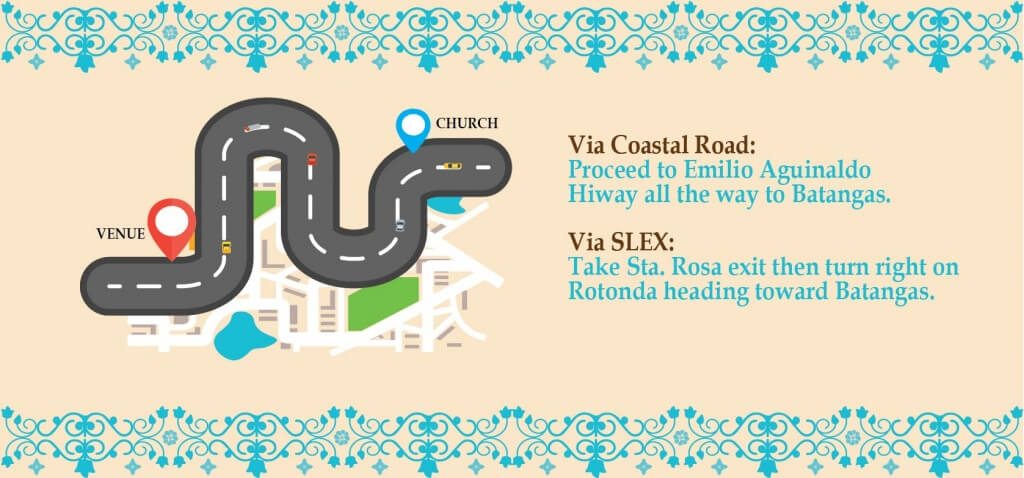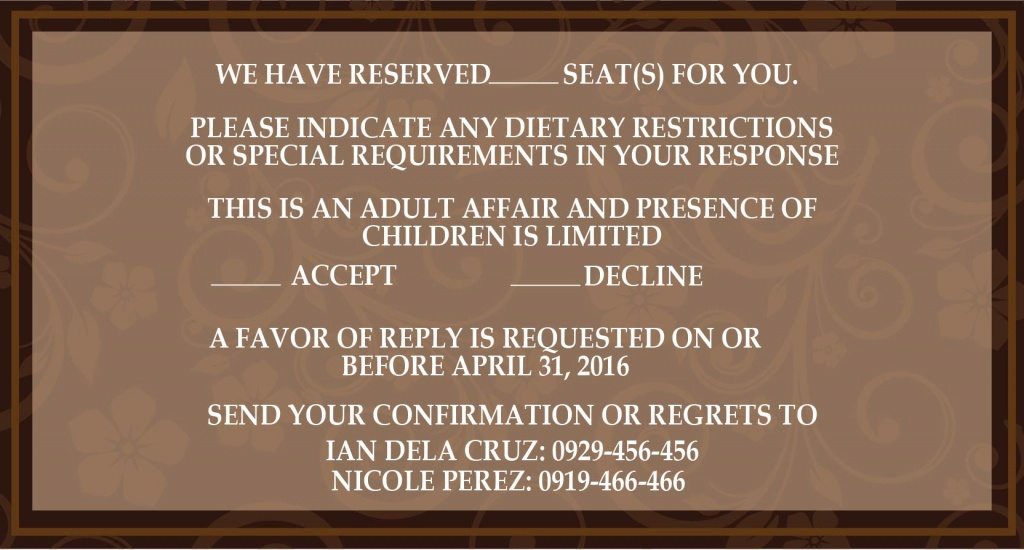Aside from being a request for attendance, an invitation also serves as a formal announcement and confirmation of an upcoming occasion. The invitation provides a glimpse of the wedding—its motif and theme, how extravagant it will be, and the type of people most likely to be part of it. Ideally, distribution should be at least a month and a half prior to the event date to give invitees enough time to make arrangements for their presence.
These days, soon-to-wed couples are more experimental and adventurous. They are governed by fewer rules in wedding planning so concepts have gone out of the box.
Some interesting wedding invitation examples include pop-up configurations and movie pass/airline ticket–like layouts. There are those who use comic strip or fairy tale book formats. A few have implemented interactive designs, requiring invitees to solve a puzzle to form the card or do some cutting and folding and create an art piece out of the invitation. But no matter how innovative a wedding invitation is, its content pretty much remains consistent. The details are often divided into three sections:
The first part is the main invitation, the second holds the bridal entourage, and the third contains all other important information that the guests will most likely need.
Aside from the design, the tone of the invitation is reflected through the capitalization of words and use of shortcuts and abbreviations. Placing titles before names gives a formal touch while using nicknames signifies a casual mood.
The main invitation includes the host, bride and groom’s names, request line, ceremony location, reception venue, date, time, and dress code.
HOST – The host is usually determined by who is shouldering the expenses for the event. There is an impression that the names of the party who will host the wedding should be on the left side or on the top line. In the Philippines, even if the couple is paying for the wedding, the parents’ names often appear on top as a way of honoring their roles.
If one of the parents is deceased, you may add a cross sign beside the name, lessen the opacity of the name, or simply add “late”.
Examples:
If both parents are deceased of either the groom or the bride, you may add “represented by” below the parents’ name then put the name of the representative below it. Putting the relationship of the representative to the groom or the bride is optional.
If both parents of the groom and the bride are already deceased, then you may write it this way:
BRIDE AND GROOM’S NAME – These may come before or after the parents’ names which is usually using the largest font.
REQUEST LINE – The formal request line commonly used for wedding invitations are “honour of your presence” and “the pleasure of your company.” The word “honor” is spelled in its British form “honour.” Though either of the two is correct, “honour” connotes a more traditional vibe. The first phrase is traditionally used if the ceremony will take place in a church to show high respect to God. The second phrase can be used for weddings held outside a religious premise like other phrases such as “invite you to join”, “you are cordially invited to witness” or “invite you to share”.
DATE AND TIME – Starts with the day followed by the date, month, year and the time.
LOCATION – There is usually no need to print the full address, if the ceremony venue is a church. More often than not, just the street and town will suffice. However, a less popular venue would require more details.
Example:
Clearly indicate the reception venue, whether it is the same as or different from where the ceremony was held. If the guests need to travel to another location, print the exact address.
Examples:
ATTIRE – The dress code is usually included in the main invitation while the details are elaborated on the third part.
Examples:
The second part of the invitation is the bridal entourage which includes the wedding officiant, principal sponsors, secondary sponsors, best man, maid of honor, bridesmaids and the groomsmen, coin bearer, ring bearer, bible bearer, and flower girls.
Wedding officiant – It is on the top of the second part of the invitation. The usual wedding officiant is a clergy, judge, or a mayor. Make sure you get the officiant’s title right. The proper spelling of the name is very important as well.
The wedding entourage – In the spirit of fairness, it is better to list the names in alphabetical order. The gentlemen’s line is usually on the left side or on top. If one of your principal sponsors is a couple, you can just put their titles followed by the godfather’s name.
Examples:
The last part of the invitation contains information that will serve as a guide for your guests.
Map and location details – To make sure your guests won’t get lost, it is best to give them the most convenient route and simplest direction details.
Attire details – Elaborate on the attire details here. You may include images to give guests a better idea of what they must wear.
Examples:
Couple’s request – This is where you can mention what you would prefer to receive. Make it clear yet subtle. You don’t want to seem assuming or demanding. If you are part of a bridal registry, you may provide the details here.
Examples:
Accommodation details – Present the available accommodations. Communicate properly whether you are treating your guests or just helping them with arrangements.
Examples:
RSVP – Don’t forget to include an RSVP section. This will oblige your guest to reply by confirming their attendance or sending their regrets. This can be included on the last part of the invitation. But for more emphasis, it is ideal to put this on a separate card.
An invitation is a way of telling your guests that you would like to share your big day with them, so make sure the invitation communicates the right message and encourages them to attend your wedding.
For more wedding planning tips, like us on Facebook at hizonscatering or follow us on Twitter @HizonsCatering and Instagram @hizons.catering
References include interview with Ms. Ella R. Espino, owner of Paperbug&Co. They create and supply invitations and souvenirs to different events here and abroad.
Contact info: 09266293594|9250790|[email protected]|FB: facebook.com/paperbug




































